My experience hard disk resuscitation
Probably, sooner or later it happens to everyone - once and a usb-hard disk crashed into my head.
Somewhere in a hurry and just pulled the cord out of the USB socket in the laptop (as often happens).
I come to work, connect the HDD, and it is empty ...
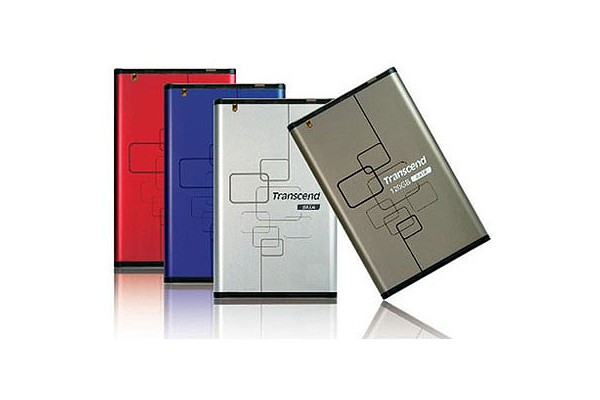
What to do!? What did I do - read on.
Of course you should not panic.
The first thing you need to remember is the main rule : the less manipulation you do with the information carrier, the more chances you have to recover your information. No need to copy, cut, delete.
There may be various symptoms of the " disease " of your carrier: some folders / files disappear, copying errors, the system asks to format your carrier, etc.
Of course, it is necessary to approach each case individually, therefore it is important to have several different tools / programs for testing.
I always on my laptops, home and work PCs, portable HDDs I keep a folder with the main software that can come in handy someday. Well, of course, there were a couple of programs for working with hard disks and data recovery software in stock.
For example, these were: EASEUS Partition Master, Norton Partitionmagic, PartitionManager, Active File Recovery, Error Repair Professional, HDD Regenerator, HDDScan, Raxco PerfectDisk, R-Studio, Recover4all.
')
Previously, I crawled into EASEUS Partition Master and Norton Partitionmagic . The first is a practically lite and free version of the second.
Programs showed the presence of media, but could not determine the type of file system.
Approximate program interface:

First of all, you can, of course, just format the media in the file system we need and it looks like we’ll get a working hard disk again, however, the information stored there was important to me, so I left the formatting as a radical method for restoring my hard work.
Unfortunately, there are no screenshots of testing all the programs, but in the end, after sorting through the programs and hour-long reading of various forums, I downloaded another small utility from the network - testdisk .
The program interface is in English, but a person, at least a little fluent in technical English, is not difficult to understand.
The method of "spear" was poking around in this program:
1) Choose whether we need to keep a log. I do not need.
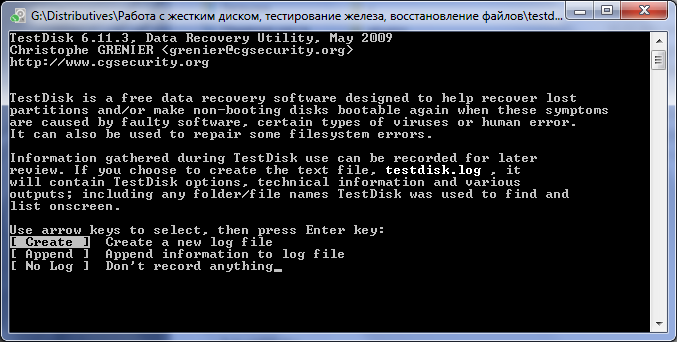
2) Next, select the media that will be tested.
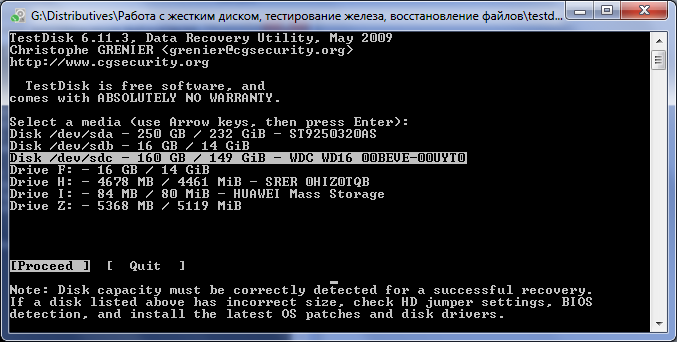
3) Select the type of partition table. In my case, Intel.
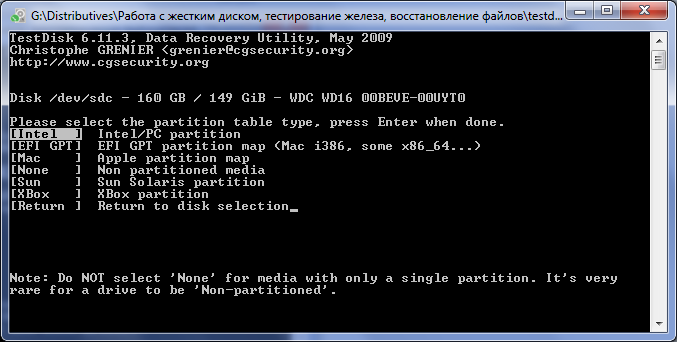
4) Next, go to the menu with possible operations on our carrier.
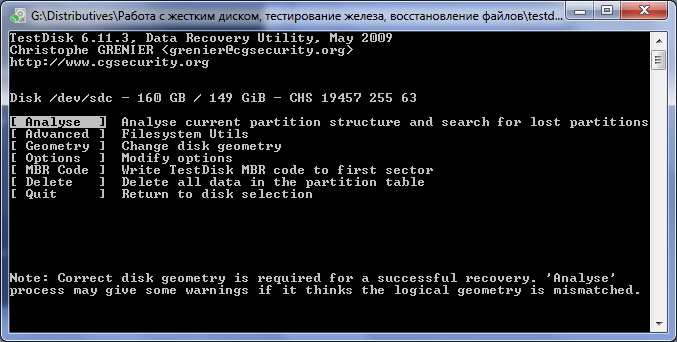
4.1 Analysis of the existing structure of sections and search for lost sections:
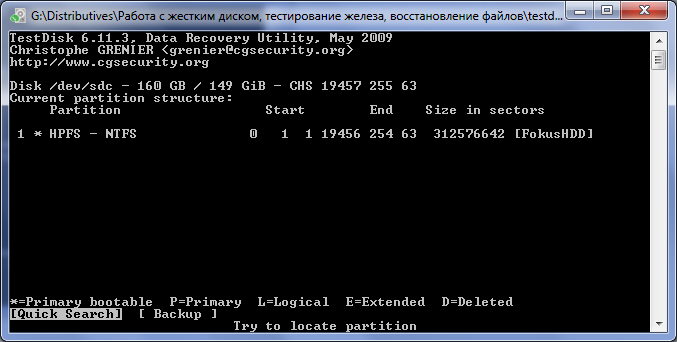
4.2 Additional Section - File System Utilities:
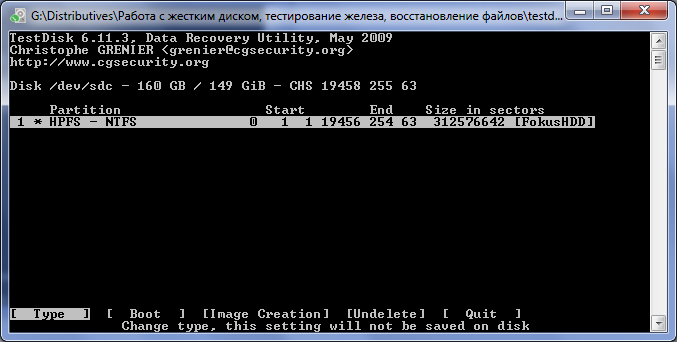
4.3 Disk geometry:
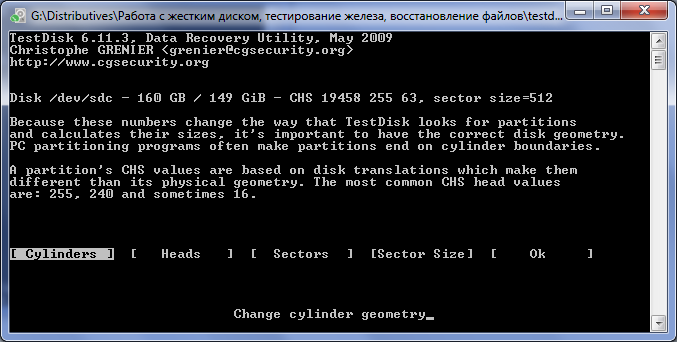
4.4 And the key section for us is " MBR Code ". Overwrite boot sector.
“Master Boot Record” is the Main Boot Record, the first physical sector (512 bytes in size) on the hard disk.

Where roughly poked:
I chose the correct disk - Check sectors - Overwrite MBD - Overwrite boot-sector.
At the same time, it rebooted once and that's it. The hard drive returned to its original operating state with all the data.
After this incident, I copied this console utility to my folders with the necessary software and for good reason.
Soon a work colleague approached me with a request to look at a computer — it stopped loading after a voltage surge.
I connect it to another PC:
The system sees the disk, but when you try to enter it, it says that the disk is not formatted and offers to format it.
I tried the program to recover deleted or damaged files:
A couple of programs (R-Studio, for example) even found all the folders and files, but restored them crookedly - not a single document opened. At the same time, the program clearly indicated that the disk file system is FAT.
The first thing that came to mind, most likely damaged disk boot sector (boot sector).
I left the program HDD Regenerator overnight with checking and correcting bad sectors.
In the morning I discovered a " blue screen of death " with an inscription like: "conflict with new equipment or software."
I tried to cut down the hard, pull out the battery from the motherboard to bring down the BIOS settings, well, and a bunch of all sorts of manipulations, including a banal load in safe mode. Nothing helped.
Everything is as before: the system sees, but does not enter ...
Then he made a number of manipulations of similar topics that he did when restoring his usb-hdd and after 10 minutes his colleague's PC booted up.
Recently I ordered a 32 gb flash drive from China, it turned out to be some kind of defective. At first, folders and files disappeared, then after formatting, it stopped opening at all. I've been conjuring with her for several days, but I can't reanimate it at all.
So far, I only see " Partition sector 0xAA55 ".
Somewhere in a hurry and just pulled the cord out of the USB socket in the laptop (as often happens).
I come to work, connect the HDD, and it is empty ...

What to do!? What did I do - read on.
Of course you should not panic.
The first thing you need to remember is the main rule : the less manipulation you do with the information carrier, the more chances you have to recover your information. No need to copy, cut, delete.
There may be various symptoms of the " disease " of your carrier: some folders / files disappear, copying errors, the system asks to format your carrier, etc.
Of course, it is necessary to approach each case individually, therefore it is important to have several different tools / programs for testing.
I always on my laptops, home and work PCs, portable HDDs I keep a folder with the main software that can come in handy someday. Well, of course, there were a couple of programs for working with hard disks and data recovery software in stock.
For example, these were: EASEUS Partition Master, Norton Partitionmagic, PartitionManager, Active File Recovery, Error Repair Professional, HDD Regenerator, HDDScan, Raxco PerfectDisk, R-Studio, Recover4all.
')
Previously, I crawled into EASEUS Partition Master and Norton Partitionmagic . The first is a practically lite and free version of the second.
Programs showed the presence of media, but could not determine the type of file system.
Approximate program interface:

First of all, you can, of course, just format the media in the file system we need and it looks like we’ll get a working hard disk again, however, the information stored there was important to me, so I left the formatting as a radical method for restoring my hard work.
Unfortunately, there are no screenshots of testing all the programs, but in the end, after sorting through the programs and hour-long reading of various forums, I downloaded another small utility from the network - testdisk .
The program interface is in English, but a person, at least a little fluent in technical English, is not difficult to understand.
The method of "spear" was poking around in this program:
1) Choose whether we need to keep a log. I do not need.

2) Next, select the media that will be tested.

3) Select the type of partition table. In my case, Intel.

4) Next, go to the menu with possible operations on our carrier.

4.1 Analysis of the existing structure of sections and search for lost sections:

4.2 Additional Section - File System Utilities:

4.3 Disk geometry:

4.4 And the key section for us is " MBR Code ". Overwrite boot sector.
“Master Boot Record” is the Main Boot Record, the first physical sector (512 bytes in size) on the hard disk.

Where roughly poked:
I chose the correct disk - Check sectors - Overwrite MBD - Overwrite boot-sector.
At the same time, it rebooted once and that's it. The hard drive returned to its original operating state with all the data.
After this incident, I copied this console utility to my folders with the necessary software and for good reason.
Soon a work colleague approached me with a request to look at a computer — it stopped loading after a voltage surge.
My actions:
I connect it to another PC:
The system sees the disk, but when you try to enter it, it says that the disk is not formatted and offers to format it.
I tried the program to recover deleted or damaged files:
A couple of programs (R-Studio, for example) even found all the folders and files, but restored them crookedly - not a single document opened. At the same time, the program clearly indicated that the disk file system is FAT.
The first thing that came to mind, most likely damaged disk boot sector (boot sector).
I left the program HDD Regenerator overnight with checking and correcting bad sectors.
In the morning I discovered a " blue screen of death " with an inscription like: "conflict with new equipment or software."
I tried to cut down the hard, pull out the battery from the motherboard to bring down the BIOS settings, well, and a bunch of all sorts of manipulations, including a banal load in safe mode. Nothing helped.
Everything is as before: the system sees, but does not enter ...
Then he made a number of manipulations of similar topics that he did when restoring his usb-hdd and after 10 minutes his colleague's PC booted up.
Chinese flash drive
Recently I ordered a 32 gb flash drive from China, it turned out to be some kind of defective. At first, folders and files disappeared, then after formatting, it stopped opening at all. I've been conjuring with her for several days, but I can't reanimate it at all.
So far, I only see " Partition sector 0xAA55 ".
Source: https://habr.com/ru/post/124221/
All Articles